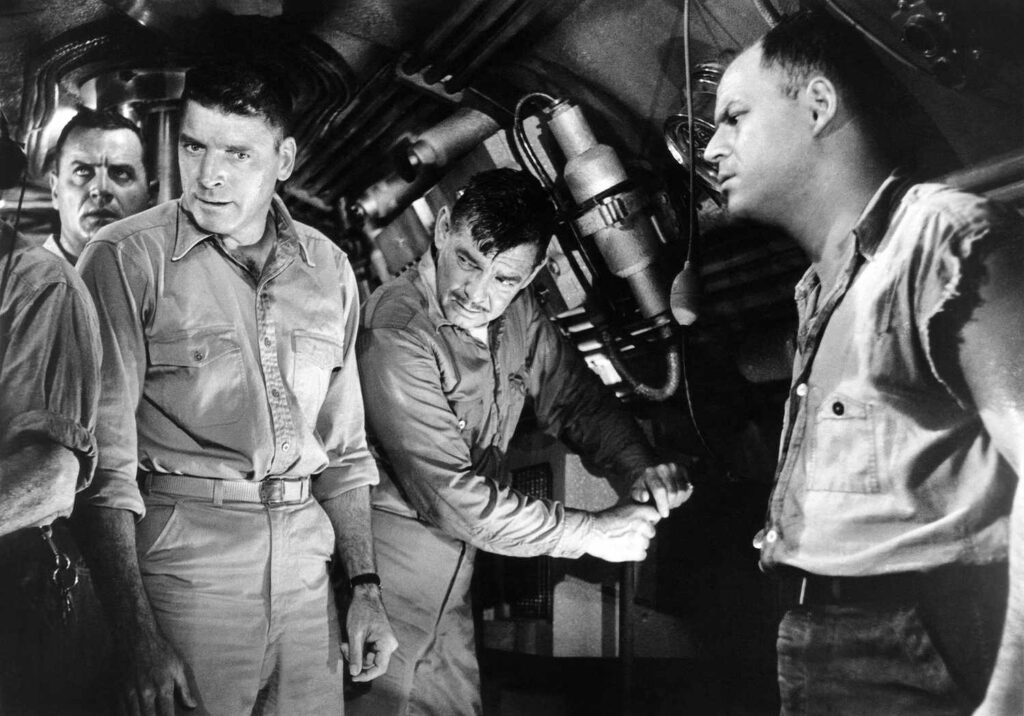
Run Silent, Run Deep (1958) tells the story of the obsessive Captain, Commander Richardson (Clark Gable), who assumes command of Lt. Bledsoe’s (Burt Lancaster) submarine to exact revenge on a Japanese battleship called Akikaze in the Bungo Straits. This highly influential WWII thriller set the standard for submarine movies by combining elements of Moby Dick and Mutiny On The Bounty with contemporaneous battle strategies. The list of films that have imitated or borrowed from Run Silent, Run Deep is long and diverse, including such notable films as Das Boot (1981) and Star Trek II: The Wrath Of Khan (1982).
Helmed with a workman’s precision, Run Silent, Run Deep is one of the best films that Robert Wise ever directed. Wise, who began his career editing the films of Orson Welles and directing pictures for Val Lewton, shoots with post-production in mind. Run Silent, Run Deep is tautly cut together to optimize suspense and reiterate the claustrophobia of submarine life. The film is dense without a single extraneous shot or frame to be found. Wise’s sense of economy, in both the areas of montage and visual composition, seamlessly strings together footage shot on sets, locations, with miniatures, from helicopters and even archival newsreels.
Run Silent, Run Deep is a film that moves along at a sustained clip that never allows the audience to look away nor to question some of the more predictable plot elements that have been lifted from Moby Dick and Mutiny On The Bounty. The originality of Run Silent, Run Deep does not reside in its dramatic or narrative content, but wholly with its technical execution. Robert Wise was always at his best as a filmmaker when presented with some technical challenge. As his career wore on those challenges had to become ever greater and Run Silent, Run Deep represents the pinnacle of Wise’s achievements in the fifties in much the same way as West Side Story (1961) became representative of Wise’s work in the following decade.
Ironically an element of the production that Wise didn’t have much control over turned out to be one of the greatest assets of the film: the relationship between Gable and his co-star and producer Burt Lancaster. Both men were divas in their own right but they came from different generations and backgrounds. And although Gable and Lancaster feuded on the set they, like their characters, maintained a degree of mutual respect. This chemistry between these two titans of the silver screen is so dynamic that it becomes more intriguing and seemingly complex with every subsequent viewing of Run Silent, Run Deep.
Unlike many WWII films Run Silent, Run Deep does not romanticize or bludgeon the audience over the head with themes of masculinity and honor in war. Where another film might have featured a long winded monologue about “why we fight” Run Silent, Run Deep opts for a more subtle scene that deals with human dignity and general morale. This relative restraint is part of what makes Run Silent, Run Deep feel so modern. Run Silent, Run Deep avoids antiquated notions of masculine honor and embraces a more humanistic approach to the material.
